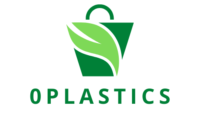In the quest for a plastic-free future, collaboration emerges as a powerful force driving positive change within the marketplace ecosystem. Plastic-free platforms, brands, and stakeholders are recognizing the transformative impact of partnerships in advancing sustainable practices, innovating solutions, and creating a collective momentum towards a world free from the shackles of single-use plastics. Let’s delve into the importance of collaboration and showcase how partnerships are shaping the plastic-free marketplace landscape.
1. Supplier and Brand Collaborations:
One of the cornerstones of the plastic-free marketplace ecosystem is the collaboration between platforms and sustainable brands. By fostering partnerships with brands committed to eco-friendly practices, plastic-free platforms curate a diverse range of products that align with their mission. These collaborations ensure a steady supply of innovative, plastic-free alternatives for consumers seeking sustainable choices.
2. Educational Initiatives with NGOs:
Collaboration with non-governmental organizations (NGOs) specializing in environmental education is crucial for plastic-free platforms. By teaming up with these organizations, marketplaces can enhance their educational initiatives, raising awareness about the environmental impact of plastic and providing consumers with valuable insights. Joint efforts in organizing workshops, webinars, and outreach programs contribute to a more informed and environmentally conscious consumer base.
3. Innovation Hubs and Startups:
Collaborating with innovation hubs and startups is vital for plastic-free marketplaces seeking cutting-edge solutions. Startups dedicated to developing sustainable packaging, alternative materials, and eco-friendly technologies bring fresh ideas to the table. By forming partnerships with these innovative entities, marketplaces can stay at the forefront of eco-friendly product offerings and contribute to the continuous evolution of sustainable practices.
4. Government and Regulatory Bodies:
Engaging with government agencies and regulatory bodies is essential for plastic-free marketplaces navigating the complex landscape of environmental regulations. Collaborative efforts can involve advocating for policies that promote sustainable practices, participating in discussions on plastic reduction initiatives, and ensuring compliance with evolving environmental standards. Partnerships with governmental entities strengthen the overall impact of plastic-free initiatives.
5. Retail Alliances:
Forming alliances with like-minded retailers expands the reach and influence of plastic-free marketplaces. Collaborative campaigns, joint events, and shared resources can amplify the message of sustainability and encourage a broader audience to embrace plastic-free alternatives. Retail alliances create a united front, demonstrating the collective commitment to driving positive change within the industry.
6. Circular Economy Collaborations:
Collaborating within the circular economy framework is pivotal for plastic-free platforms. By forging partnerships that support the recycling, upcycling, and reusing of materials, these marketplaces actively contribute to the reduction of waste. Integrating circular economy principles into the supply chain fosters a sustainable approach to product life cycles, aligning with the broader goal of minimizing environmental impact.
7. Influencer and Brand Ambassador Partnerships:
Teaming up with influencers and brand ambassadors who share a passion for sustainability is an effective strategy for plastic-free marketplaces. Influencers can amplify the message of plastic-free living to their followers, expanding the reach of the marketplace and inspiring more individuals to make eco-friendly choices. Authentic collaborations with influencers build trust and credibility within the community.
8. Collaborative Research and Development:
Research and development collaborations between plastic-free marketplaces, brands, and research institutions drive continuous innovation. By pooling resources and expertise, these partnerships can lead to the creation of new, sustainable materials, packaging solutions, and production processes. Collaborative R&D efforts contribute to staying ahead of market trends and evolving consumer preferences.
9. Community Engagement Initiatives:
Collaborating with local communities and grassroots organizations is vital for plastic-free marketplaces aiming to create a positive impact at the grassroots level. Engaging with communities through cleanup initiatives, educational programs, and supporting local eco-friendly initiatives fosters a sense of shared responsibility and strengthens the connection between the marketplace and its community.
In conclusion, collaboration stands as the linchpin in the plastic-free marketplace ecosystem. By fostering partnerships with suppliers, NGOs, startups, government bodies, retailers, influencers, research institutions, and communities, plastic-free platforms create a network that drives meaningful change. Together, these collaborative efforts propel the transition towards a sustainable and plastic-free future, demonstrating the collective strength of a united ecosystem committed to positive environmental impact.
